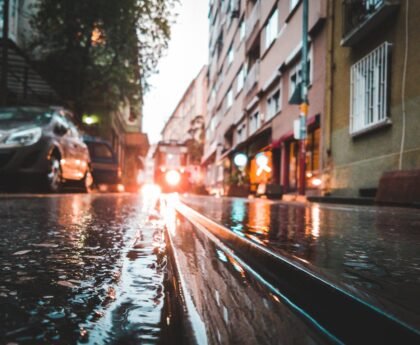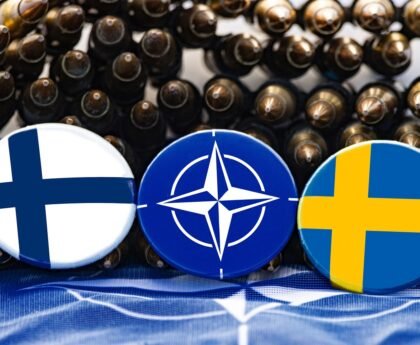In the early hours of March 26, 2024, a terrible event took place in Baltimore, Maryland. A large ship crashed into the Francis Scott Key Bridge, causing the bridge to collapse. This tragic accident shocked people all over the country and made headlines across the world. The Francis Scott Key Bridge, a vital part of Baltimore’s highway system, was completely destroyed in just moments.
This article will walk you through what happened, what caused the crash, how people responded, and what might happen next. We will keep it easy to understand, using simple words and short sentences. Let’s take a closer look at this major event.
What Happened?
At about 1:30 in the morning, a large container ship called the Dali was leaving the Port of Baltimore. It was headed to Sri Lanka, carrying cargo. Not long after setting out, the ship lost power. The lights on the ship went out, and the engines stopped working. This is called a “power failure.”
As the ship drifted in the dark waters of the Patapsco River, it started moving toward the Francis Scott Key Bridge. The bridge, which opened in 1977, carried more than 30,000 vehicles each day. It was a key part of the Interstate 695 Beltway, connecting parts of Baltimore and surrounding areas.
The Dali struck one of the bridge’s main support columns. Within seconds, the entire middle section of the bridge crumbled and fell into the river. Cars, trucks, and debris sank into the water. It was a shocking and heartbreaking scene.
Were People on the Bridge?
Yes. At least eight workers were fixing potholes on the bridge when the ship hit it. These workers were part of a night crew doing regular maintenance. There were also a few vehicles crossing the bridge at the time of the crash.
Rescue teams rushed to the scene. Helicopters, boats, and divers were sent to help. Two workers were rescued from the water — one was injured but alive. Sadly, six people were missing and later declared dead. They were fathers, brothers, and friends. Most were immigrants working hard to support their families.
How Did the Ship Lose Power?
The Dali is a large ship, about the length of three football fields. It is owned by a company in Singapore and was being operated by a crew from India.
About 20 minutes after leaving the port, the ship lost power. Experts say there may have been a problem with the ship’s engines or electrical system. Alarms were sent out, and the ship’s crew dropped anchor to try to slow it down. But it was too late.
There was no time to stop the crash.
Did the Crew Warn Anyone?
Yes, and this is important. As soon as they realized the ship was drifting, the crew radioed a “mayday” call. This is an emergency message used when danger is near. Thanks to that warning, traffic workers were able to stop some cars from getting on the bridge. If that warning had not been sent, many more people might have been on the bridge during the collapse.
Their quick thinking saved lives.
How Did People React?
The country was shocked. News of the bridge collapse spread fast. Videos showed the bridge falling apart and cars plunging into the dark water. People were heartbroken.
President Joe Biden gave a speech later that day. He praised the first responders and promised to help Baltimore rebuild. He also said the federal government would pay for the new bridge. “We will not walk away,” he said.
Maryland Governor Wes Moore also spoke to the public. He called it a “once-in-a-generation” disaster. He said the state would do everything possible to support the families of the victims and the workers who risked their lives to help.
What Happened to the Port?
The Port of Baltimore is one of the busiest ports in the United States. It handles cars, trucks, farm equipment, and other cargo from all over the world.
After the bridge collapsed, the port had to shut down. The wreckage blocked the shipping channel. Ships could not move in or out. This caused major problems for businesses that rely on the port to send and receive goods.
Officials are working to clear the debris so that the port can reopen safely. A timeline has not been set, but they hope to make progress quickly.
What Happens Next?
Many things must happen now.
- Search and Recovery: Divers searched for the missing workers. Sadly, as of early April, four bodies had been found. Two workers remain missing and are presumed dead. The search was made harder by bad weather and strong currents.
- Clearing the River: Giant cranes and barges are being used to remove parts of the fallen bridge. This will help reopen the river and allow ships to pass.
- Investigating the Cause: The U.S. Coast Guard and the National Transportation Safety Board (NTSB) are investigating. They want to know why the ship lost power and whether the crew or ship company followed the rules.
- Rebuilding the Bridge: Engineers will design a new bridge to replace the one that collapsed. Building it will take time — possibly several years — and cost billions of dollars.
Who Pays for the Damage?
President Biden said the federal government will cover the costs of rebuilding the bridge. Insurance companies may also help pay for the damage caused by the Dali.
Still, some experts say lawsuits are likely. People hurt by the crash or affected by the port shutdown may seek damages. The ship’s owners may face legal action if they are found at fault.
Remembering the Victims
The six men who died were working on the bridge to fix potholes. They came from different countries, including Mexico, Guatemala, and Honduras. They worked hard to support their families.
Vigils have been held in Baltimore and other cities to honor their lives. People have left flowers and messages near the collapsed bridge. The state of Maryland has also promised to help their families financially.
What Can We Learn?
This tragic event teaches us many lessons:
- Infrastructure Matters: Bridges, roads, and ports are important. When something goes wrong, it affects many people.
- Emergency Planning Saves Lives: The mayday call from the ship helped stop more cars from getting on the bridge. That call likely saved many lives.
- Support for Workers: The men on the bridge were doing tough jobs that often go unnoticed. They deserve respect and protection.
Thoughts
The collapse of the Francis Scott Key Bridge is one of the worst disasters in Maryland’s history. It took lives, closed a major port, and shook a community. But in the days after, we also saw hope.
Rescue workers acted fast. Leaders promised to help. And people across the country showed love and support for Baltimore.
As the city begins to heal, plans are already in motion to rebuild. It will take time, money, and teamwork. But the spirit of the people is strong. The bridge may be gone, but the community stands tall — ready to rise again.



